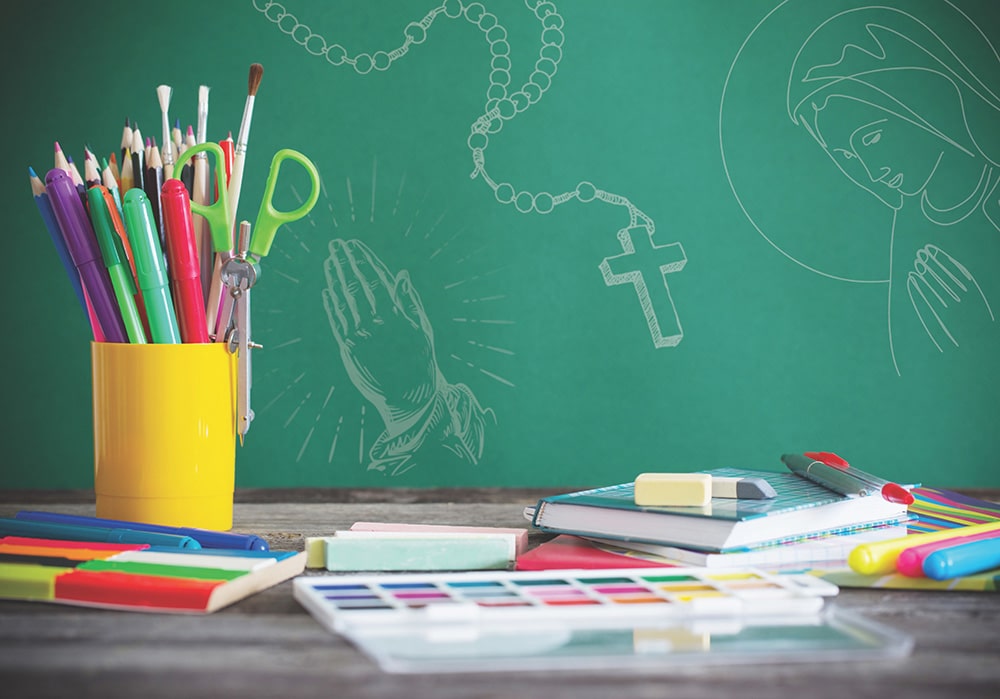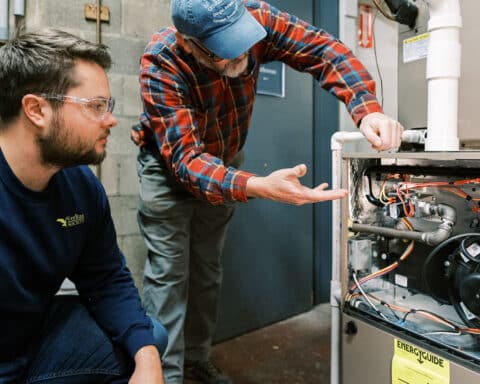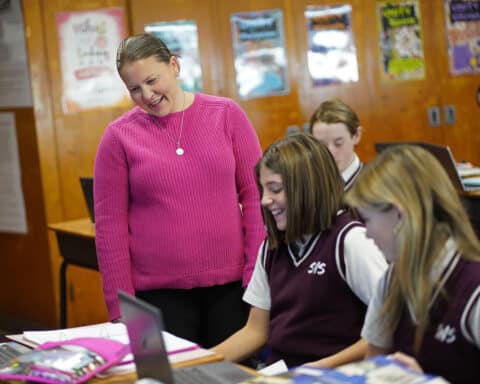Catholic education in the United States is needed now more than ever before. That’s a big statement, but we believe it is also an accurate one.
An oversimplified primer goes like this: When Catholic parochial schools came about in the late 19th and early 20th centuries, they were meeting a critical need of the time. In a heavily Protestant landscape, the many Irish Catholic immigrants were desperate for a place to attend school where their faith could be protected and nourished. Parish-based schools, staffed by religious orders, were a low-cost, commonsense solution that helped preserve the Faith and culture of this next generation of American Catholics.
Today, we face a different kind of challenge. Rather than anti-Catholic sentiment in a primarily Protestant society, people of faith find themselves immersed in a postmodern, post-religious era. Truth has become relative. Faith has become irrelevant. By now, we are familiar with the statistics, and they aren’t pretty.
But this is exactly why we need Catholic education now more than ever. In a time when the basic tenets of Christianity — indeed, of nature — are considered to be intolerant and bigoted, maintaining organized modes of communicating and transmitting the Faith becomes critical. While it is natural and fitting that the primary educators of children are their parents, parents are in desperate need of support when it comes to repelling the tightening grip of today’s intolerant culture. Catholic education can and should be a significant part of the solution.
Unfortunately, Catholic education today, most of which operates under the auspices of a diocese, is not without its own challenges — not the least of which is declining enrollment. The number of Catholic elementary schools in the United States has dropped from 9,366 in 1970 to 5,115 in 2018, and the number of students enrolled in Catholic elementary schools from 3.4 million to 1.3 million. Additionally, many Catholic schools have a lapsed Catholic identity. Rather than boldly and unwaveringly proclaiming the truths of the Faith, they, too, have found the culture difficult to resist. Faced with budgetary challenges, too many Catholic schools struggle to retain competent and mission-centric educators, and too many administrators let fundraising and the need for increased enrollment factor heavily in their decision-making regarding how the Faith is taught — or not taught.
In the 21st century, the U.S. Church is in need of Catholic schools that are fiercely Catholic, that are equipped and unafraid to teach the Faith and that strengthen and encourage students to share it bravely and lovingly with others. It needs schools that have educators who are well versed in and passionate about both their fields of study and the Faith, who love their students and want to assist them in becoming more than just successful citizens but, first and foremost, Christ-centered disciples. It needs schools that develop a child’s heart as well as his mind, nurturing within him Christian love of neighbor and the poor.
This is, undoubtedly, a tall order in need of creative solutions and committed leadership. Some solutions are coming in the form of private, lay-run Catholic schools that require monumental amounts of effort and resources. Others are coming from diocesan initiatives. Take, for example, the Diocese of Rockville Centre, New York, which on Jan. 10 rolled out the “Morning Star Initiative” — what it called “a bold plan for the revitalization of Catholic elementary school education on Long Island.”
Focused on primary education, and with the assistance of the Society of Mary, which operates several schools within the diocese, the initiative will consist of a “comprehensive review” of local Catholic elementary schools this year, followed by the development of “an action plan to restore a robust Catholic culture, academic excellence and fiscally sustainable schools,” stated a recent news release.
The initiative centers around four pillars to “renew and transform Catholic education” in the area, said Bishop John O. Barres. These include: “A robustly Catholic culture centered on the spiritual, intellectual, sacramental, moral and liturgical life of the Church; safe and supportive communities recognizing the dignity and potential of everyone; academic excellence built on a Catholic faith-based model of individual growth and development; and that we are here to stay to meet the changing needs of the community, and to ensure sufficient resources for an improved educational environment and the financial stability of the schools.”
Efforts like those in the Diocese of Rockville Centre are not easy, and we wish them well in their endeavor. Perhaps this initiative will serve as a blueprint for renewing Catholic education in the United States. It is needed now more than ever.
Our Sunday Visitor Editorial Board: Gretchen R. Crowe, Scott P. Richert, Scott Warden, York Young





